Tomb of the Unknown Soldier Centennial Commemoration Lecture Series
Preserving the Past for the Future
Written and presented by Rebecca L. Stevens, AIA, former Cultural Resource Manager, and Caitlin Smith, AIC PA, current Cultural Resource Manager & previous Conservator, Arlington National Cemetery
For over 100 years, Arlington National Cemetery (ANC) has been the steward of Memorial Amphitheater and the Tomb of the Unknown Soldier. This episode explores the architectural history and evolution of these sites over time and shares the techniques employed by the cemetery to maintain them. This careful stewardship includes traditional construction methods that have been combined with innovative science and technology to protect and preserve these monumental structures for future generations.
Listen Here: Preserving the Past for the Future
Architect Rebecca L. Stevens, AIA, (now retired) served as the first-ever Cultural Resource Manager for Arlington National Cemetery and previously served as the Chief Historical Architect for the National Park Service, National Capital Region. After practicing architecture throughout the country with the National Park Service, she continued her career in a private architecture firm. Stevens is a graduate of the University of Cincinnati School of Design, Art, Architecture, and Urban Planning with a professional architecture degree, and she is a registered architect in California, Colorado, and Maryland.
Caitlin Smith, AIC PA, is the current Cultural Resource Manager and previous Conservator for Arlington National Cemetery. At ANC, she focuses on the preservation and rehabilitation of 19th through 21st century historic structures, commemorative works, and artifacts. Previously, she worked for several private conservation firms. Smith holds a Master’s Degree in historic preservation from the University of Pennsylvania, and a Bachelor’s Degree in historic preservation and political science from the University of Mary Washington. She is a Professional Associate of the American Institute for Conservation (AIC).

Installation of the marble die block for the permanent design of the Tomb of the Unknown Soldier in 1931 or 1932. (Library of Congress)
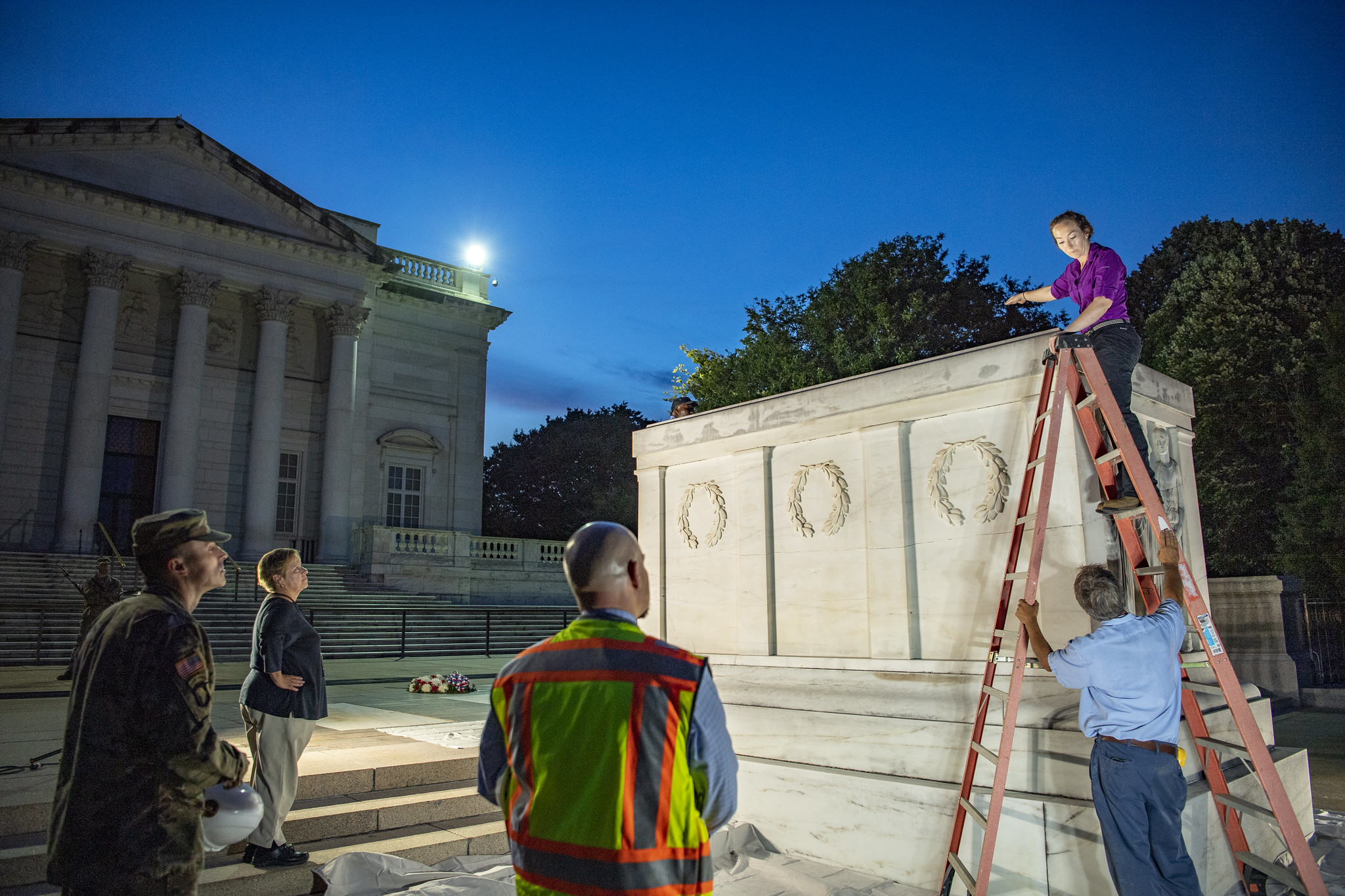
ANC employees from Engineering and Facilities Maintenance discuss the application of zinc oxide to the Tomb of the Unknown Soldier on August 12, 2019. One major goal of these preservation efforts was to reduce the visual contrast between the black biofilm and the white marble without damaging the stone. (U.S. Army photo)
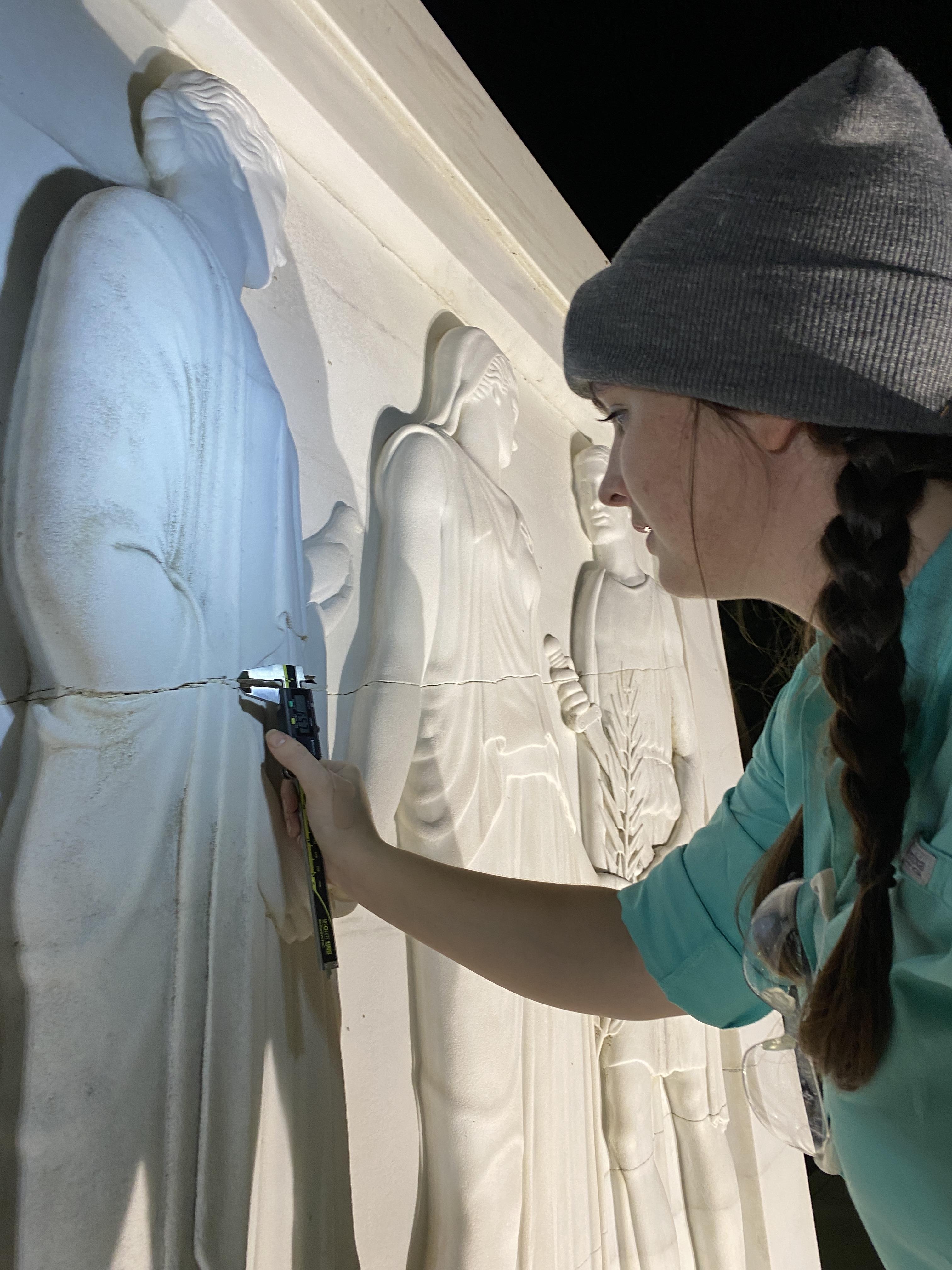
Conservation intern Elizabeth O'Meara measures and documents cracks in the Tomb of the Unknown Soldier before a conservation treatment on September 7, 2021. (U.S. Army photo)

Chehallis Robinson, a conservation intern, regrouting (infilling) cracks in the Tomb of the Unknown Soldier on September 10, 2021. (U.S. Army photo)
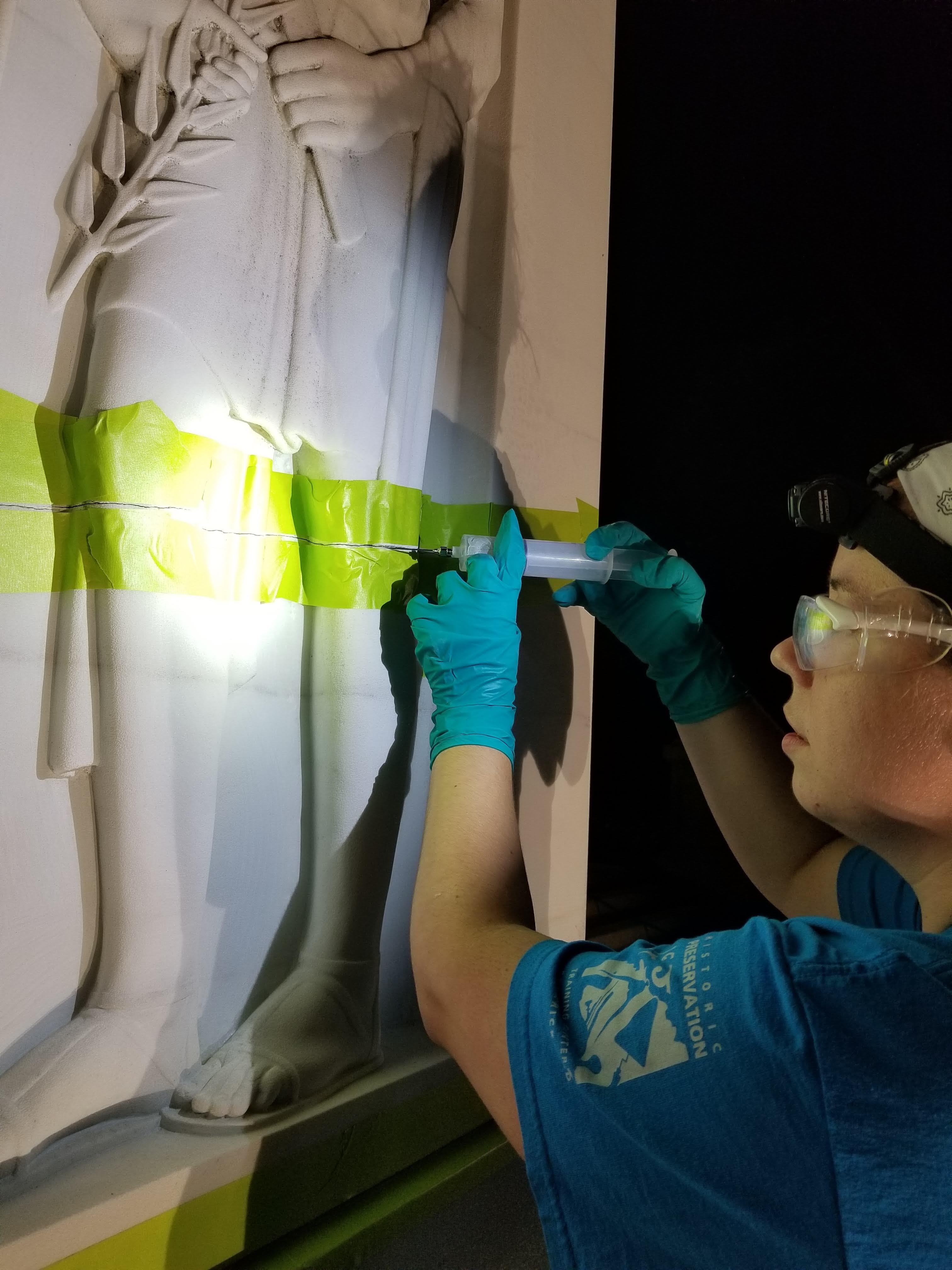
Conservation intern
Chehallis Robinson injection grouting (infilling) cracks in the Tomb of the
Unknown Soldier on September 9, 2021.
(U.S. Army photo)
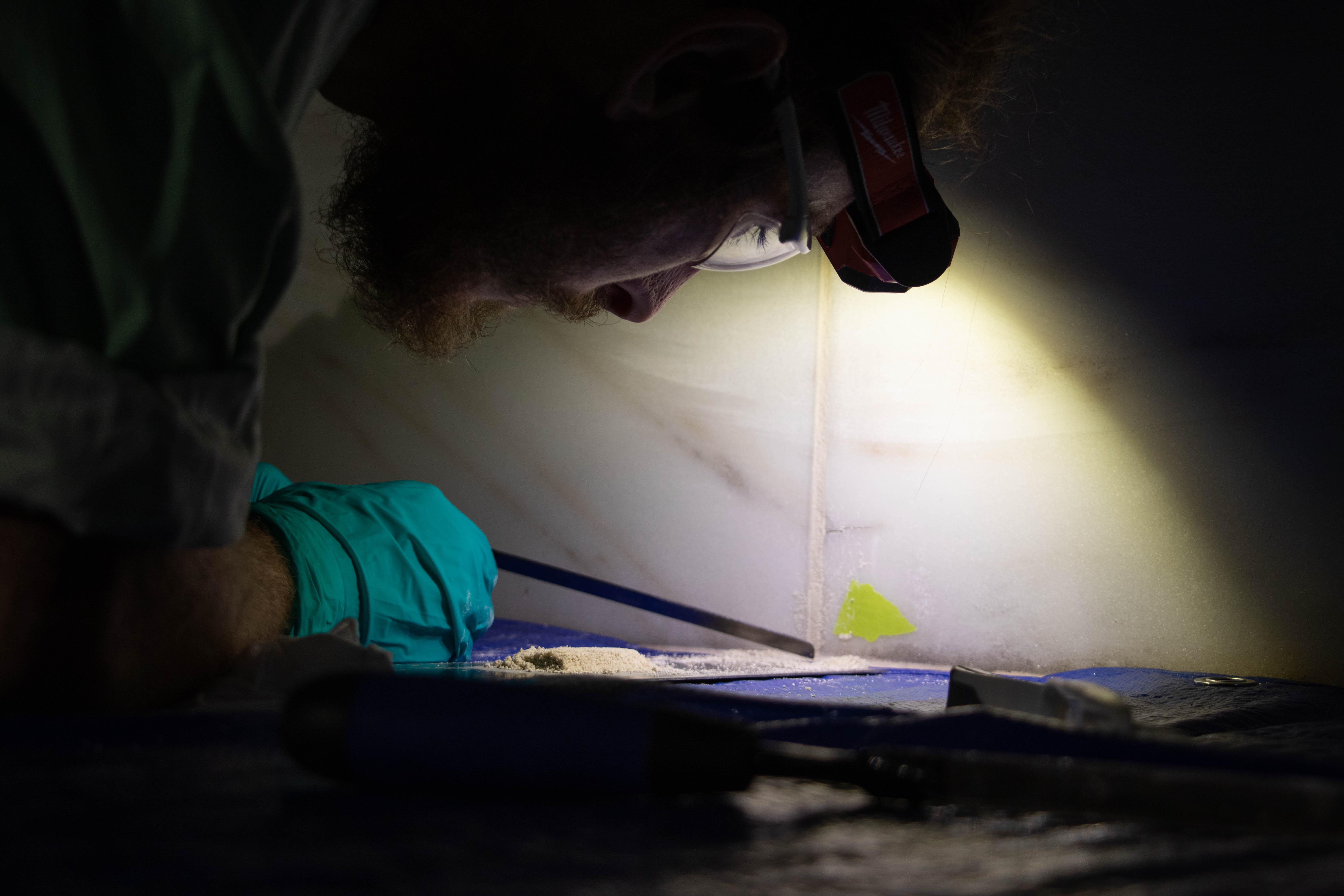
Conservation intern James Lorenzin does repointing work at the Tomb of the Unknown Soldier on September 10, 2021. This process involves the application of new mortar in masonry joints. (U.S. Army photo)
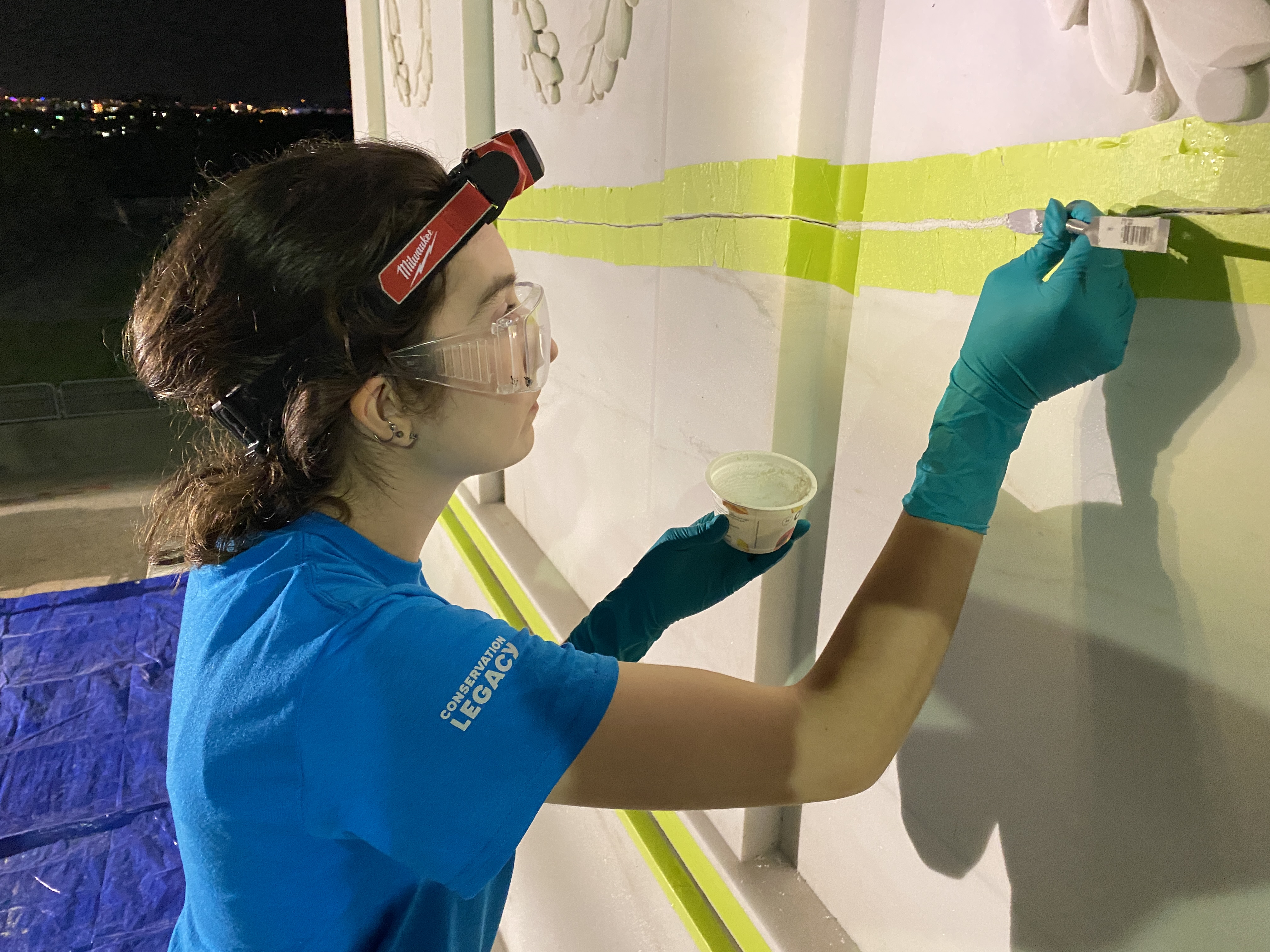
During conservation of the Tomb of the Unknown Soldier on September 9, 2021, intern Megan Timmins works on regrouting (infilling) cracks in the Tomb. (U.S. Army photo)
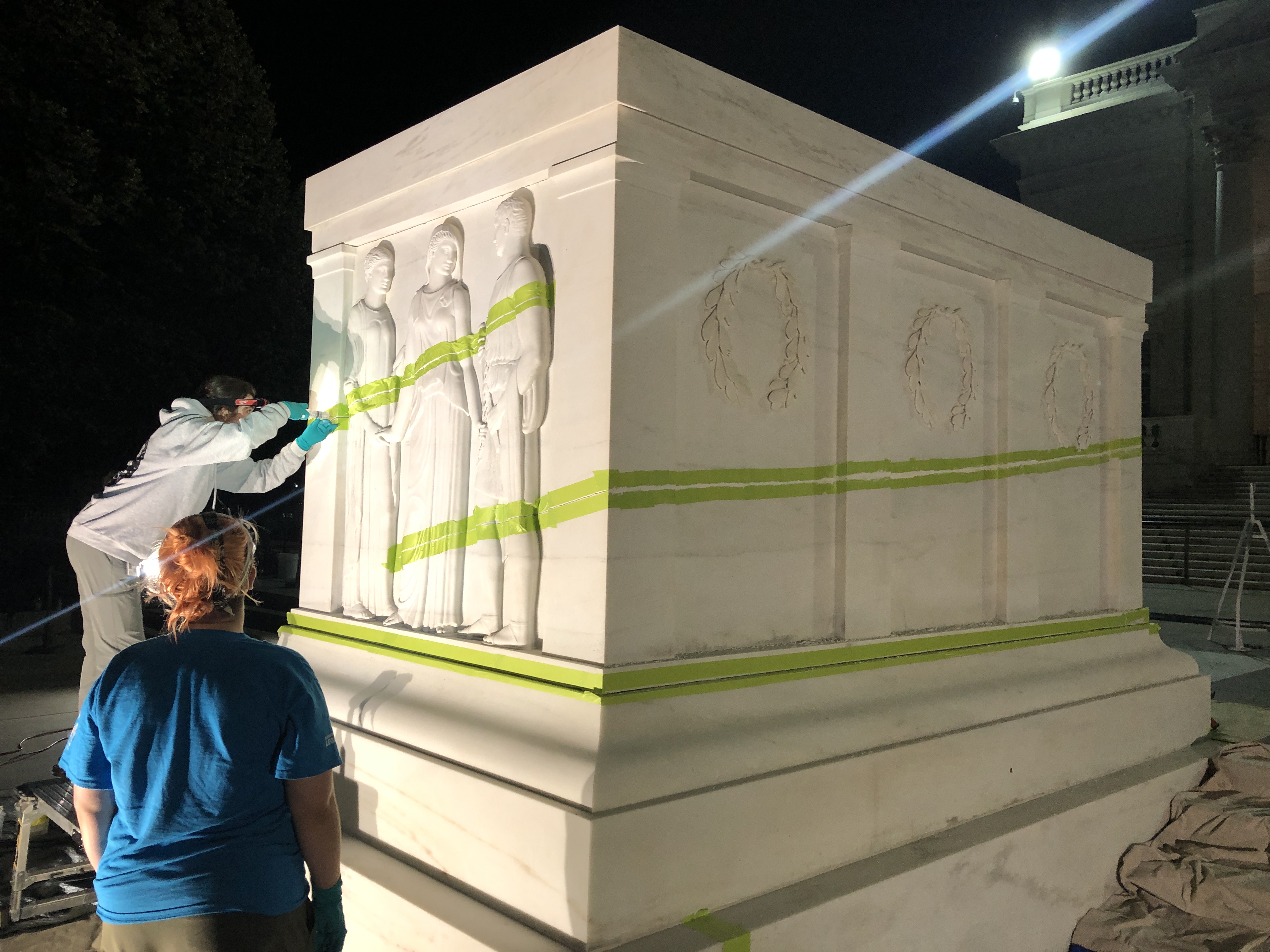
Conservation interns
Megan Timmins and Chehallis Robinson work on regrouting (infilling) cracks in
the Tomb on September 9, 2021.
(U.S. Army photo)
